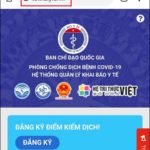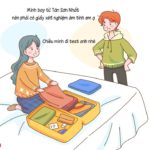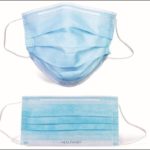Due to the complicated pandemic situation and an overwhelming number of F0 and F1 cases, the Ho Chi Minh City Department of Health issued Document 4534/SYT-NVY on the evening of July 13 on implementing isolation and treatment measures for F0 and F1 cases. What are the conditions for home isolation for F0 and F1 cases? Let’s find out in the following article.
1. Home Isolation Conditions for F0 Cases
According to the Health Department’s guidelines, there are two cases of F0 that can be isolated and treated at home.
Case 1: Asymptomatic individuals currently hospitalized
When the RT-PCR test result on Day 10 is negative or still positive but with a low viral load (CT value > 30), indicating no or very low infectivity, the patient can be transferred to home isolation if their residence meets safety and infection prevention requirements. The patient will undergo further RT-PCR tests at home on Days 14 and 21.
Case 2: Asymptomatic cases applicable to infected medical staff
Infected medical staff can be isolated at home if they meet similar conditions to F1 cases. They will self-monitor their health, report to the medical monitoring agency daily, and undergo testing as regulated.
Case 3: Individuals who are new F0 cases and have a positive rapid antigen test or positive RT-PCR for SARS-CoV-2
F0 individuals aged 1-50 who are asymptomatic or have mild clinical symptoms (no respiratory failure: SpO2 > 96% while breathing room air, respiratory rate ≤ 20 breaths/minute); no underlying diseases, not pregnant, and not obese. If F0 individuals have stable underlying diseases, home isolation can be considered if they have received two vaccine doses or it has been 14 days since their first COVID-19 vaccine dose. These individuals can self-care and contact medical staff for monitoring and supervision.
Notice from the Health Department:
– These F0 cases must be supervised by the local health authorities and their workplace. They must comply with safety measures to prevent infection.
– Regarding the organization of home healthcare for F0 cases, the local health sector must organize a team to monitor the health of these individuals daily. Additionally, a hotline must be set up to receive information if patients develop symptoms and require urgent hospitalization.
– If the F0 individual is a child or someone who cannot care for themselves, a caregiver is required. The family should not have any high-risk individuals (elderly, underlying diseases, obesity, pregnancy, etc.).
 According to the Health Department, there are two cases of F0 that can be isolated and treated at home.
According to the Health Department, there are two cases of F0 that can be isolated and treated at home.
2. Home Isolation Conditions for F1 Cases
According to Document No. 11042/BYT-DP dated December 29, 2021, on adjusting the definition of COVID-19 close contact (F1) cases:
Close contacts (F1) are defined as one of the following cases:
– Individuals who have had direct physical contact (handshakes, hugs, direct skin or body contact) with a confirmed case (F0) during the infectious period of F0.
– Individuals wearing masks who have had contact or communication within 2 meters or in the same confined and enclosed space for a minimum of 15 minutes with an F0 individual during their infectious period.
– Unmasked individuals who have had close contact or communication within 2 meters or in the same confined space with an F0 individual during their infectious period.
– Individuals who directly care for, examine, or treat a confirmed case (F0) during the infectious period of F0 without using full personal protective equipment (PPE).
Regarding F1 isolation, the Health Department directs the implementation according to the guidance in Document No. 5152/BYT-MT dated June 27, 2021, of the Ministry of Health. However, there are some adjustments as follows:
F1 Cases in Very High-Risk Areas (Locked-down Areas)
F1 cases in very high-risk areas who wish to isolate at home must meet the following conditions:
- The F1 isolation house must have an external notice and a soft barrier, and all household members must not go out.
- F1 individuals should minimize contact, have separate personal items, eat separately, and have their trash collected separately. They should disinfect common bathroom areas after each use.
- Organize management and supervision to ensure strict medical isolation at home and medical supervision of isolated individuals during and after isolation. Organize the collection and transportation of infectious medical waste for treatment as regulated.
Note: If F1 cases in very high-risk areas do not meet the criteria of the Ministry of Health for home isolation, they will be transferred to centralized isolation. RT-PCR testing will be conducted on Day 7 instead of Day 14 as before, and if negative, they will be considered for home isolation at their place of residence.
F1 Cases in High-Risk Areas
- If all family members are identified as F1, home isolation for all members can be considered according to the guidance of the Ministry of Health.
- Home isolation for F1 cases in apartments or collective residences with separate and enclosed rooms may be permitted. However, if there is an F0 case in the collective residence, all F1 cases must be transferred to centralized isolation.
F1 Cases in Other Areas (Including Areas with Lower Risk Levels)
If all or many family members are identified as F1, home isolation for all members can be considered without requiring a separate room for each individual.
 Regarding F1 isolation, the Health Department directs the implementation according to the guidance in Document No. 5152/BYT-MT dated June 27, 2021, of the Ministry of Health.
Regarding F1 isolation, the Health Department directs the implementation according to the guidance in Document No. 5152/BYT-MT dated June 27, 2021, of the Ministry of Health.
These are the conditions for home isolation for F0 and F1 cases that we want to share with you. We hope you find this information useful. Stay healthy!
Source: NLD Newspaper, Ministry of Health














